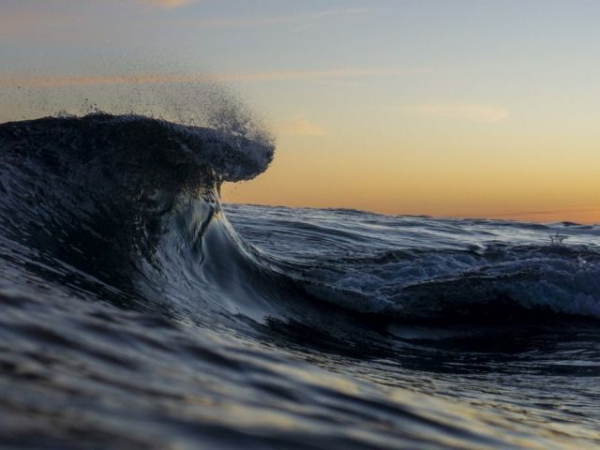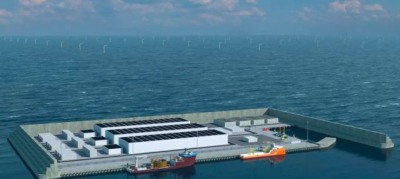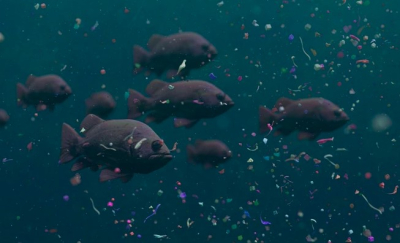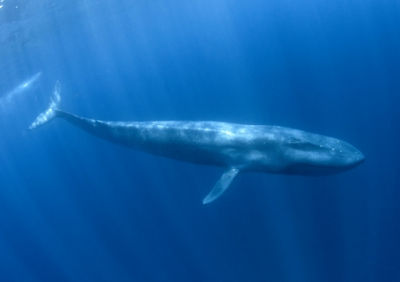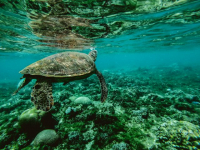The international waters of the High Seas, that lie outside any country’s exclusive economic zone (EEZ), make up 64% of our global ocean and cover 46% of Earth’s surface. Nearly half of our planet is beyond the reach of any enforceable law or governance. It is estimated that just 1.3% of the High Seas is protected, compared to 17% of the land.
In March 2022, representatives of the world’s governments gathered at the United Nations in New York to negotiate the final terms of a new High Seas Treaty on the conservation and sustainable use of marine biodiversity in areas beyond national jurisdiction (the BBNJ). Unfortunately, member states failed to reach a consensus. An additional round of meetings was held in August of 2022, but still to no avail. “Despite an extra two-week negotiation session, countries ran out of time yet again, stalling over differences on sharing marine genetic resources,” commented an article by China Dialogue.
Now, member states hope to reach an agreement in New York during a new round of negotiations that began on 20 February and is expected to run for two weeks until 3 March.
“With the accelerating climate and biodiversity crises, time is not a luxury we have to put ocean health back on track,” commented Sarah Bevis from the High Seas Alliance in a statement. She added: “This time around, we need to seize the moment and get an ambitious treaty over the finish line, so we can roll up our sleeves and work on the crucial tasks of getting the treaty ratified and implemented.”
If adopted, the legally binding treaty would outline measures to protect global ocean health, foster climate resilience, as well as safeguard food security for people around the world, amongst other factors.
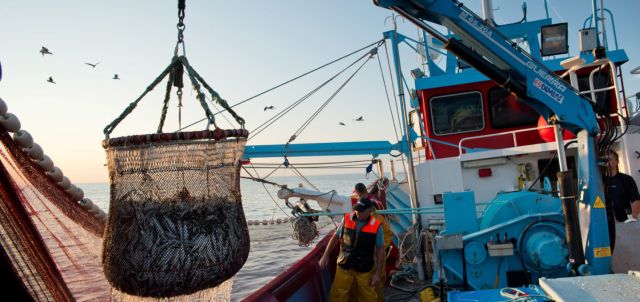
A letter from the High Seas Alliance and other partners to world governments present at the negotiations read: “Expectations are high that all States will accelerate international cooperation and demonstrate the flexibility required to finally deliver a strong and ambitious Treaty, marking the culmination of many years of discussion on this issue.”
It went on to say: “The new Treaty must deliver a set of vital conservation measures and tools to align global governance with modern scientific understanding of ocean ecosystems and the levels of protection required to safeguard them. Through a new, global decision-making body, various sectors and regional interests can be coordinated to ensure due consideration is given to marine biodiversity. This includes legal frameworks to designate marine protected areas (MPAs), including highly and fully protected areas, and strengthen assessment and management of human activities outside protected areas.”
With all eyes on New York in the coming days, the High Seas Alliance implemented a ‘treaty tracker’ to rate each country’s negotiating positions and keep track on the progress of the talks. While at least 49 countries have committed to achieve an outcome at the talks, it is yet to be seen what exactly this will entail. One of the main issues to figure out is how the new international body that would be set up following an agreement, would be working alongside other organisations.
WRITTEN BY
OCEANOGRAPHIC STAFF
Archeologists in China have found the remains of what may be the world's oldest known flush toilet.
Broken parts of the 2,400-year-old lavatory, as well as a bent flush pipe, were unearthed last summer by a research team among ancient palace ruins in the Yueyang archaeological site in the central city of Xi'an, according to Chinese state media.
Details of the find were released last week, sparking widespread interest in China and offering a rare insight into the privileged and comparatively advanced world of the country's ancient ruling elite.
Described by researchers as a "luxury object," the toilet was thought to have been located inside the palace, with a pipe leading to an outdoor pit, according to state-owned China Daily.
Liu Rui, a researcher at the Institute of Archeology at the Chinese Academy of Social Sciences, who was part of the excavation team, told state media the toilet would have likely been reserved for high-ranking officials during the Warring States Period (475-221 BC) and the later Han Dynasty (206 BC-AD 220). He added that servants would likely have poured water into the toilet bowl every time it was used.
"The flush toilet is concrete proof of the importance the ancient Chinese attached to sanitation," Liu said, adding that there were very few records of indoor toilets in ancient times.
Access to clean, flush toilets remain an issue in parts of modern China. Early in his tenure, Chinese leader Xi Jinping promised to "revolutionize" the country's restrooms, as part of efforts to improve rural hygiene.
"The toilet issue is no small thing, it's an important aspect of building civilized cities and countryside," Xi said in an article in the state-owned People's Daily in 2018. "This work should be advanced as a specific task of rural revitalization and such shortcomings that affect the quality of people's life should be filled with great efforts."
Prior to the newly announced discovery, the invention of the first flush toilet was widely credited to English courtier John Harington, who supposedly installed one for Queen Elizabeth in the 16th century, though 4,000-year-old drainage systems that might have been connected with toilets have been found in northwest India.
The ruins from Yueyang, the former capital of Qin State and later the first capital of the Han Dynasty, were discovered in the 1980s. The recent find is part of a broader effort to understand ancient Chinese dynasties, including how people lived and how their cities were constructed, the Institute said in a statement announcing the discoveries.
Archaeologists are now analyzing soil samples collected from the toilet in hopes of finding out what people ate during that time, according to China Daily.
Written by
Tara Subramaniam, CNN
Denmark, the nation that built the world’s first offshore wind farm, has agreed to an ambitious plan for another global first – an energy island in the North Sea which could eventually be capable of supplying energy to a history-making 10 million homes. The move will create a critical boost to the world’s offshore wind capacity.
The first “hub and spoke” energy scheme will involve building an island 80 kilometres off the Danish coastline to act as the transmission centre for hundreds of wind turbines surrounding it. At $34 billion, it’s the largest construction project in Danish history.
The project is also a potential blueprint for other coastal nations to develop their own green energy sources. “It’s in Danish waters, yes, but it could conceptually be in any other country,” said Peter Larsen of the North Sea Wind Power Hub Programme.
Energy hub for the world
The initial phase for the artificial island is around the size of 18 soccer pitches. Initially, the North Sea hub will be capable of producing 3 gigawatts of electricity, but the plan is to scale up to 10 gigawatts, which is nearly one-and-a-half times Denmark’s current needs.
As well as supplying other European countries with electricity, the goal is to use the new offshore island to produce green hydrogen from seawater, which can also be exported. Large batteries on the island will store surplus electricity for use when demand is high.
Although the Danish government will own a majority stake, private companies will be invited to join a public/private partnership to build the project. Power will be supplied by as many as 600 giant wind turbines, each standing up to 260 metres tall.
Such efforts are key given new climate-first commitments from countries around the world. As Reuters has reported, the European Union intends to depend entirely on renewable energy by 2031, increasing its energy capacity 25-fold by 2050.
Offshore wind installations saw a slight dip in the mid-2000s, but have been growing ever since. In fact, 2020 saw record-breaking financial investments into offshore wind, according to new data from The Renewables Consulting Group
Scaling up while holding hands
The scaling up of offshore wind should be the catalyst for other ocean-based economic activities worldwide, according to Thomas Thune Andersen, Chairman of Danish green energy company Ørsted, which built the Vindeby wind farm.
“Setting up wind farms does have an impact on the local environment,” he told the World Economic Forum’s 2021 Davos Agenda virtual event. “But it’s also an opportunity to do other things,” he said.
There is a need “to set ambitions high” when it comes to offshore renewable energy, Andersen said, and to enable other activities in the same area, such as mariculture.
Governments, NGOs and businesses “all need to hold hands in order to do this,” he said. “We have seen very good examples already of seaweed farming, talking to fishermen about how we optimize that, how we build reefs and how we create other kinds of nurseries for fish.”
Andersen is one of more than 65 global leaders from business, civil society, international organizations, and science and technology who comprise the Friends of Ocean Action, an initiative convened by the Forum to fast-track solutions to the most pressing challenges facing our oceans.
By Douglas Broom
https://www.weforum.org/
Bots that attract small pieces of plastic waste could one day help remove the millions of microplastics floating in the sea.
A fish-shaped robot that can collect tiny pieces of plastic waste has been developed by scientists at Sichuan University, China. The bot uses light from a laser to flap its tail side-to-side and has a body that can attract molecules found on microplastics, causing them to stick to it as it swims past.
The robo-fish was, in part, inspired by marine life – its moving body uses a structure similar to a naturally strong and flexible substance found on the inside surface of clam shells: mother-of-pearl.
Mother-of-pearl, also known as nacre, is a layered material that looks almost like a brick wall under the microscope. It's this structure that the team mimicked in their robot, as the sliding layers enabled it to move its tail but the strength of the overall design made it more durable.
Now that the team have proven the robo-fish concept works, they'll move onto developing its ability to dive deeper and carry more microplastics out of the ocean.
All items that contain plastic can release microscopic amounts of plastic debris, which are called microplastics. These small bits of material – less than 5mm in size – build up on the seafloor. There, they can be mistaken for food and get stuck in an animal’s digestive tract, leading to starvation. Some plastics have been treated before use, and as their coating degrades it can release toxic chemicals into the water that poison nearby marine life.
No-one knows exactly how much plastic is in the world’s oceans. The most recent figures, published in 2015, estimate that somewhere between 4.8 and 12.7 million tonnes of plastic enter the seas each year.
While reducing plastic waste and filtering wastewater before it gets to the ocean can help minimise the amount of microplastics in our seas, cleaning the already-tainted water is difficult. The tiny particles can get lodged deep within cracks and crevices on the seafloor, areas that are hard to reach using large and inflexible robots.
Science Focus
The new robo-fish, however, is just 15mm long. Its clever design also allows it to swim in all directions using a light source as its power. When a laser is shone on the fish's tail, the light deforms the material, causing it to bend. Done several times in succession makes the tail flap side to side, and the robo-fish can swim up to 2.67 times its own body length per second.
Its body also contains molecules that are slightly negatively charged, which attract the parts of the microplastics that are positively charged. This means the robo-fish is so 'sticky', that it doesn't need to get so close as to touch every single microplastic to collect it.
Currently, though, the team have only tested the fish on microplastics that float in water. The next test will be to see if the robot can attract plastic in as challenging an area as the seafloor.
By Amy Barrett
How Much Is the Ocean Worth?
Putting a price tag on the ocean might just save it.
A few years ago, Ralph Chami, a financial economist with the International Monetary Fund (IMF), was on a boat in Mexico’s Sea of Cortez with researchers studying blue whales. He knew nothing about the whales—only that seeing them in the wild was on his “bucket list”—but the moment Chami saw his first blue whale surface next to their boat, he felt everything change. The whale was a female, and she was massive, 110 or 120 feet long, with a mouth large enough to fit an elephant. One flick of her fin would have thrown Chami and the researchers into the sea. But she was feeding next to their small boat peacefully. For Chami, the experience epitomized all that he had missed about the wider world from the years spent in conference rooms and behind computer screens and he struggled to contain his emotions.
At night, Chami listened to the researchers talk about the astonishing amount of carbon the world’s great whale populations capture. Why, Chami wondered, was this information not more widely known? The problem, he thought, was that scientists were speaking a language that the people with the money and power to help protect our shrinking whale populations did not understand. That realization set Chami on a new path, helping translate the value of living whales and entire ecosystems into dollars and cents as a way to incentivize their protection. In 2019, he and several colleagues published their findings on the economic value of the world’s great whales in IMF’s flagship magazine, Finance & Development. After accounting for all the services a great whale provides, such as the 33 tons of carbon dioxide its body captures over its lifespan of—on average—60 years, the tourism dollars generated by whale-watching, and the nutrients it disperses that make fish more abundant, the number Chami arrived at was $2 million per whale.
Why consider a whale—and the ocean environment it inhabits—as a service provider? It occurred to Chami that most of the benefits of biodiversity are “silent and invisible” to those making the decisions around the use of natural assets. But, if a living whale offered far greater value than a dead whale, bought and sold for its meat and blubber, Chami saw that it would be possible to value other living things—and even entire ecosystems. In 2019, he co-founded Blue Green Future to advocate for market values to nature’s regenerative services, from whales to seagrass meadows.
Of course, not all aspects of nature’s value can be captured by economic terms. Like life insurance policies, markets can only account for aspects of nature that can be quantified monetarily. And just as the value of a person’s life amounts to much more than assets owned and income earned, simply pricing the benefits that nature provides fails to capture its less-tangible values—all that is transcendental and spiritual about our living planet.
Recently, I spoke to Chami and Dinah Nieburg, a psychologist, executive coach, and a co-founder of Blue Green Future, about how a “nature-based economy,” can save the world’s oceans, the limits of science-based conservation, and the risks and rewards of using markets to fight climate change and biodiversity loss.
To start, why do you feel it’s important to put a price on living things, be it an ecosystem or an individual animal?
Dinah Nieburg: If we are to survive as a species, we need to change our behaviour from an extractive mindset to valuing and creating markets around the services of nature. We’re advocating that you can actually create a market for living ecosystems. It brings together the preservation of nature with income for local and indigenous people who can contribute to both the protection and regeneration of these living systems. Otherwise, we just continue to damage, extract, and kill our living systems.
Ralph Chami: The other way of looking at what we’re doing is we’re valuing a living and thriving nature. There are values for the ocean, but they’re all extractive. Meaning, if you catch and kill a whale for consumption it’s $40,000 to $80,000. So when people say, “oh you’re putting a price on nature,” I say no, you’re putting a price on nature. You’re putting a zero price on nature. I’m trying to tell you it’s not zero.
If you catch and kill a whale for consumption it’s $40,000 to $80,000.
Which brings us to the question, how much are the oceans worth? How would you go about valuing the ocean, especially since much of the ocean’s biodiversity, functioning, and deep-sea structures are yet to be discovered?
Nieburg: As with any of the ecosystem services, we start with the known science and create financial valuations from there. In the case of the open ocean, scientists know overall how much carbon is sequestered by the ocean, and since we have a carbon market for carbon sequestration, we can derive a ballpark figure on the services already provided by the open ocean. Additional “living systems” values of the open ocean will eventually be measured.
So, what is that ballpark figure?
Chami: The value of the ecosystem services of the open ocean is at least in the tens of trillions, if not more. For example, in carbon sequestration alone, starting from 1870 until now, the value of carbon captured at the bottom of the deep ocean is close to $30 trillion. Another example is seagrass. In a report submitted to UNEP/GRID-Arendal, we valued the carbon sequestration of global seagrass to be over $2.3 trillion.
How would these “nature-based” markets work, and how do they differ from existing carbon-reduction or conservation efforts?
Chami: All these living systems—whales, elephants, trees, coastal blue carbon (mangroves, seagrasses, salt marshes, kelp forest), peatlands—can grab carbon from the atmosphere and sequester it in perpetuity. And then there’s the deep ocean, which is a project we’re working on now and can grab more carbon than you can imagine.
The value of that carbon sequestration in, say, a forest, far exceeds chopping it and selling it for timber. It’s the same thing with salt marshes, seagrasses, and mangroves, but it’s something no one knew because nobody had ever valued these living systems. We’re used to so much extractive. So, what do we do with that valuation?
This is the part that you’re asking. All these countries and companies have committed to going carbon neutral or negative by 2050 or whatnot creating the demand for carbon offsets.
For example, you could sell the carbon offsets of a mangrove. If you have a community they have mangroves they’re protecting, they can sell the carbon offsets to companies who want to offset their carbon footprint. The company claims its carbon offset by paying the community money and the money goes to help the local community for looking after its mangroves, providing income and employment. So, it’s not just a carbon game. Really, what you’re investing in is biodiversity.
The value of carbon captured at the bottom of the ocean is close to $30 trillion.
Why not just invest more money in traditional conservation methods?
Chami: Conservation was always a cost proposition. You put your hand out and go begging for people to give money to look after a system. That’s why it was always underfunded and that’s why we could never save the elephants or the whales—or nature, for that matter. What our paradigm does is turn it upside down: Conservation becomes profitable. Conservation was a conversation among activists, scientists, and policymakers. Markets were never in it. We were the bad guys. But guess what, we have $16 trillion available worldwide for funding investments and we can move very fast—faster than any government.
And yet, putting a price on nature and opening it up to market forces carries its own risks. How do you avoid simply privatizing public resources?
Chami: Yes, the risk is out there. If you do privatize natural capital, global inequities would be a hundredfold worse than where we are now, and that worries us. It would be devastating. The so-called “carbon cowboys” go to countries where governance is weak and they buy up nature—land, mangroves, seagrasses. And they sit on the asset and wait for the price of carbon to go up, and then sell it. By buying it, they clear out indigenous and local communities. Those communities and indigenous people should never sell their assets—they should charge rent for looking after their assets.
What still needs to happen for a nature-based economy to work in the real world?
Chami: You need three things: the science, the valuation, and the policy that confers legal ownership to the natural asset. Why do you invest in stocks and bonds? Because these are recognized instruments by the law. How do I put a whale on my balance sheet? Is it valuable? Yes, it was valued at $2 million. Is it recognized by the law? That’s where the policy action is needed. Once you do that, it becomes a financial asset to the countries or communities that own it.
Imagine a ship going through a marine protected area and there’s this gorgeous 110-foot blue whale blocking the ship’s path. The captain is late in delivering his cargo and he thinks to himself, “should I stop? What’s the penalty?” If it’s nothing, he’ll hit the whale. Now imagine if the country where that whale is swimming has imposed a fine of $3 million for hitting the whale because that’s the whale’s value. Then the captain will say, wait a minute, maybe I can switch direction or slow down, which would cost less than hitting the whale and being charged.
But there’s more than that. Because the ship’s insurance company will say, “hey, when we wrote the contract for you, there was no asset in the water worth $3 million that you could damage—meaning we didn’t know the whales existed as an asset. So, you’re on your own. We’re going to terminate the contractor you’re going to install a device on your ship that will keep you away from hitting the whale.” So, once you have a policy action valuing nature, the market reinforces it.
Critics have warned that carbon markets don’t guarantee widespread protection of ecosystems or the systemic change needed to get off fossil fuels. For instance, a mining company that wants to pollute a river can “offset” the damage by paying someone to restore another river. Or, a fossil fuel company can encourage consumers to go “carbon neutral” and buy carbon credits to offset emissions from their flights or gas-powered car. How do you ensure that creating a nature-based economy doesn’t end up perpetuating those business-as-usual interests?
Chami: We wouldn’t be here having this conversation if we were doing a good job of taking care of nature. There are limits to love, and the limits of our love for nature are really, really low.
In your bathroom, there’s a tub. Your tub is full. There’s a tap dripping into the tub. Your tub is the atmosphere and it’s full of carbon dioxide. And the tap is the CO2 emissions. So, even if every company stopped burning fossil fuels tomorrow and we all went solar, the tub is still full—and the tub is going to burn us alive. The offsets are designed to drain the tub. Shutting off the tap is something different. The two problems should be separated with different policies designed to address each one.
Nieburg: It’s so clear that we have not reduced our emissions enough. We need all the carbon removal mechanisms possible. Countries and companies need to be held accountable for reducing their emissions, and there needs to be a massive effort toward restoration and regeneration. Unless and until we place a value on keeping the largest ecosystem—open ocean—alive, functioning, and full of marine life, we will continue to only look at growing the “blue economy” based on actions that continue to damage, deplete and destroy our life system.
Sarah Tory
Little Fish - Big Impact
When anchovies mate, they stir the ocean and spur a healthy ecosystem, study finds
Researchers found that the frantic movement of anchovies during their spawning season has a significant impact on ocean turbulence.
It's not about the size of the fish -- it's about the motion in the ocean.
A new study led by Southampton University researchers has found that when some species of fish get frisky, their activity causes the Earth's waters to move -- as much as a major storm does.
Researchers analyzed ocean turbulence over 14 days in Ría de Pontevedra, a coastal inlet in northeastern Spain. They found that turbulence increased 10- to 100-fold when anchovies gather to mate during the spawning season -- and that the ocean mixing caused by the fish's lovemaking is as efficient as that caused by geophysical turbulence like storms, winds, tides and other natural forces.
Even though the weather was calm during the period of the study, the anchovies' breeding made the water as turbulent as if a large storm had occurred. Like many fish, anchovies reproduce through spawning, with the females releasing eggs and the males releasing sperm to fertilize them.
Researchers collected samples with small fishing nets, which found recently spawned European anchovy eggs -- a sure sign that the fish were spawning nearby.
The study, published in the journal Nature Geoscience on April 7, found that fish's ability to sway the oceans is strongest near the coast, where the ocean layers are more shallow.
The ocean is made up of multiple layers, with lighter, warmer waters at the top and denser, cooler waters at the bottom. Mixing the layers helps circulate nutrients and oxygen, keeping the ecosystem running.
The findings contrast with previous research that has found that "biomixing," like that caused by the fish, has a minimal impact, especially in open waters.
"We believe that biological mixing was intense in our observations because the bay is highly stratified," Dr. Bieito Fernández Castro, the research fellow at the University of Southampton who led the study, said in a news release. "The temperature and other properties vary significantly at different depths."
The fish's "frantic behavior" during mating, researchers found, swirled together the stratified ocean layers in the bay.
This mixing, whether caused by natural forces or marine life, helps circulate oxygen and nutrients and redistribute the temperature of the water, supporting the healthy functioning of the ocean ecosystem.
(CNN)
Today’s oceans are a tumult of engine roar, artificial sonar and seismic blasts that make it impossible for marine creatures to hunt or communicate. We could make it stop, so why don’t we?
We were whaling with cameras, joining a flotilla of a dozen other tourist boats from harbours all around the Salish Sea. It was one of my first trips to the area, in August 2001. The fuzz and beep of ship radios stitched a net over the water, a blurry facsimile of the sonic connections of the whales themselves. Every skipper heard the voices of the others, relayed by electromagnetic waves. The quarry could not escape. “Whales guaranteed” shouted the billboards onshore.
We motored on, weaving around island headlands. A sighting off the southwest shore of San Juan Island. Through binoculars: a dorsal fin scythed the water, then dipped. Another, with a spray of mist as the animal exhaled. Then, no sign. But the whales’ location was easy to spot. A dozen boats clustered, most slowly motoring west, away from the shore. We powered closer, slowing the engine until we were travelling without raising awake and took our place on the outer edge of the gaggle of yachts and cruisers.
A sheet of marble skated just under the water’s surface. Oily smooth. A spill of black ink sheeting under the hazed bottle glass of the water’s surface. Praaf! Surfacing 15 metres ahead of the boat, the exhalation was plosive and rough.
The pod of about 10 animals came to the surface. Part of the L pod of orcas, our captain said, one of three pods that form the “southern residents” in the waters of the Salish Sea between Seattle and Vancouver, often seen hunting salmon around the San Juan Islands. Others – “transients” that ply coastal waters and “offshores” that feed mostly in the Pacific – also visit regularly. The L pod continued west, heading toward the Haro Strait. Our engines purred as the U-shaped arc of boats tracked the pod, leaving open water ahead of the whales.
We dropped a hydrophone over the boat’s gunwale, its cord feeding a small speaker in a plastic casing. Whale sounds! And engine noise, lots of engine noise. Clicks, like taps on a metal can, came in squalls. These sounds are the whales’ echolocating search beams. The whales use the echoes not only to see through the murky water but to understand how soft, the taut, fast or tremulous matter is around them.
Mixed with the staccato of the whales’ clicks were whistles and high squeaks, sounds that undulate, dart, inflect up and spiral down. These whistles are the sounds of whale conviviality, given most often when the animals are socialising at close range. When the pod is more widely spaced during searches for food, the whales whistle less and communicate with bursts of shorter sound pulses. These sonic bonds not only connect the members of each pod but distinguish the pod from others.
Today, ocean waters are a tumult of engine noise, sonar and seismic blasts. Sediments from human activities on land cloud the water. Industrial chemicals befuddle the sense of smell of aquatic animals. We are severing the sensory links that gave the world its animal diversity. Whales cannot hear the echolocating pulses that locate their prey, breeding fish cannot find one another amid the noise and turbidity, and the social connections among crustaceans are weakened as their chemical messages and sonic thrums are lost in a haze of human pollution.
Here off the coast of San Juan Island, the whales’ voices were like fine silk stitched into thick denim of propeller and motor sound, clicks and whistles sometimes audible but often disappearing into the tight weave of engines. A dozen boats gave off throbs, whirs and shudders as they tracked the whales, combustion engines swaddling the whales in an inescapable, constricting wrap.
In the distance, I could see a container ship and an oil tanker headed north through the Haro Strait, likely bound for Vancouver, the largest port in the region – two of the more than 7,000 large vessels that, combined, make more than 12,000 transits through the strait every year. These range from bulk carriers to container ships to tankers, many of which are 200 or 300 metres long. Large vessels also ply the waters west of the Haro Strait, headed to ports and refineries in and around Seattle and Tacoma. Each one of these vessels makes sound audible underwater from tens, sometimes hundreds, of miles.
Unlike small pleasure boats that are usually moored at sundown, these large vessels make noise all night and day and are often the most active and loudest at night. The largest container ships blast at about 190 underwater decibels or more, the equivalent on the land of a thunderclap or the takeoff of a jet.
The southern resident whale community whose life centres on these waters cannot bear the noise. Their population is in decline, likely headed to extinction unless the world gets more hospitable. In the 1990s, the community numbered in the 90s. Now they’ve dropped to the low 70s, losing one or two more animals every year without raising new calves. In 2005, they were listed under the US Endangered Species Act. No single factor is responsible, but the interaction of shipping sounds, dwindling food supply and chemical pollution is, for now, closing the door on their future.

_______
These whales are the falcons of the ocean, rocketing down 100 metres or more in pursuit of their nimble and speedy prey, the chinook salmon. Sound frequencies of boat noise overlap with the clicks that the animals use to echolocate and find their prey. Noise raises a fog, blinding the hunters. If a whale is within 200 metres of a container ship or 100 metres of a smaller boat with an outboard engine, its echolocation range is reduced by 95%.
In the air, we hear only a low groan from passing vessels. The sound is mostly transmitted down, below the waves, and the aerial portion is quickly dissipated. Under the surface, the sonic violence of powered boats travels fast and far through the pulse and heave of water molecules. These movements flow directly into aquatic living beings. Sound in air mostly bounces off terrestrial animals, reflected back by the uncooperative border of air to the skin. Our middle-ear bones and eardrum are specifically designed to overcome this barrier, gathering aerial sound and delivering it to the aquatic medium of the inner ear. Sound, for us, is focused mostly on a few organs in our heads. But aquatic animals are immersed in sound. Sound flows almost unimpeded from watery surrounds to watery innards. “Hearing” is a full-body experience.
For most whales, and for many fish and invertebrate animals, eyes are only occasionally useful. In the abyssal depths, the animals swim in ink. Along coasts, the water is so turbid that animals see, at most, a body length ahead. Sound reveals the shapes, energies, boundaries and other inhabitants of the sea. Sound is also a communicative bond. In the ocean, as is true in the rainforest where dense foliage occludes vision, sound connects you to unseen mates, kin and rivals, and it alerts you to nearby prey and predators.
If salmon were abundant, all this noise might not be a problem. But the chinook salmon that compose most of the whales’ diet here are in crisis. Dams, urbanisation, agriculture and logging have cut off or degraded most of the freshwater rivers and streams in which the fish spawn and live out their first months. Chinook salmon numbers in this region have declined by 60% since the 1980s, and possibly more than 90% since the early 20th century. Under current conditions, models forecast, at best, a fragile southern resident population. Any additional stress will send them to extinction.
Since 2017, the Port of Vancouver has enacted a voluntary slowdown of shipping traffic headed through the Haro Strait. For 30 nautical miles, large vessels slow, adding about 20 minutes to the ships’ voyages. Ship noise increases with speed, and so dialling back the throttle lessens the cacophony in a place where the southern resident whales often feed. More than 80% of vessels have complied with the project.
Yet traffic increases yearly in the region, more than eliminating the quiet gained by shaving some noise from each passing ship. In 2018, crude oil exports from Vancouver increased dramatically, mostly destined for China and South Korea. In 2019, the Canadian government approved an expansion that would nearly triple the capacity of the pipeline that supplies much of the oil from the tar sands region of Alberta. Vancouver’s port is seeking approval for a vast new container terminal. In 2021, the nonprofit Friends of the San Juans catalogued more than 20 other proposals to build new or expanded shipping terminals for containers, oil, liquefied gas, grain, potash, cruise ships, coal and car carriers in the region. If approved, these would increase traffic by more than 25%.
Seven hundred kilometres north of Vancouver, the fjords that lead to the port of Kitimat are home to several species of whales living in relatively unpolluted and quiet waters. Under construction there is a liquefied natural gas terminal that is slated to add 700 new large-vessel transits, a more than thirteenfold increase, not counting the powerful tugs that would accompany the tankers as they navigate rocky fjords.
The US navy also plans expanded exercises in the region, including the use of explosives and loud sonar. By its own estimates, across the Pacific north-west coast, navy “acoustic and explosive” exercises, including those in the waters favoured by the southern residents, will kill or injure nearly 3,000 marine mammals and disrupt the feeding, breeding, movements and nursing of 1.75 million more.
_______
The whales in and around the San Juan Islands and the Haro Strait live in a constriction point for much of the trade that passes between Asia and North America, supplemented with some shipping from the Middle East and Europe. The vast majority of the consumer goods and bulk commodities that move between the continents do so on ships. I look around at my material possessions. Whales, either in the Haro Strait or perhaps off the coast of Los Angeles, heard the arrival of every item made in a country on the Pacific rim: laptop, silverware, watering can, furniture and car.
Whales living along the Atlantic coast were immersed in the sounds of deliveries from Europe and North Africa: office chairs, books, wine and olive oil. Having lived most of my life inland, many hours’ drive from the sea, I have seldom seen or heard whales. But the whales hear me. They are immersed in the sounds of my purchases from over the horizon every day of their lives.
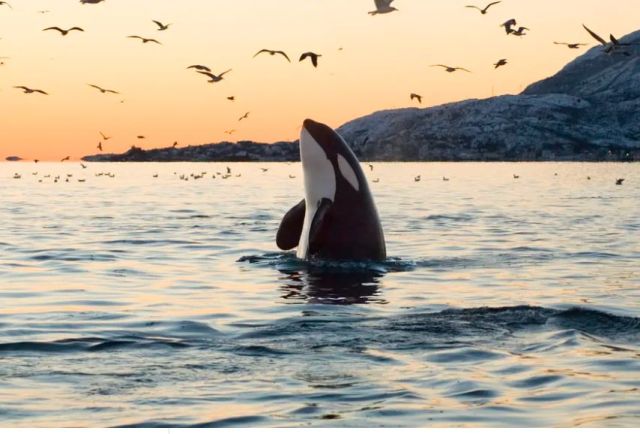
The converging shipping lanes around major seaports are focal points for a noise problem that extends across the oceans. In the 1950s, about 30,000 merchant vessels plied the world’s oceans. Now about 100,000 do, many of them with much larger engines. Tonnage of cargo has increased tenfold.
Ambient noise on the Pacific coast of North America has increased by about 10 decibels since the 1960s, when the measurements started. By some estimates, noise levels in the world’s oceans have doubled every decade since the mid-20th century. The noise is worse around the major shipping lanes that connect major ports across the northern Pacific and Atlantic, for example, but because sound propagates readily in water, the rumble reaches for hundreds of kilometres. When a large ocean-bound ship crosses the continental shelf, its sound shoots to the deep ocean floor, several miles down, then bounces up off the sediment and into the deep sound channel. This channel carries the noise thousands of miles. Across much of the world, it is now impossible to measure the background levels of ocean sound without engine traffic.
Nearshore, small-boat traffic adds another, higher-pitched, layer of sound, as I discovered on the deck of the whale-watching boat. The number of recreational boats in the US has increased by 1% a year for the past three decades. In coastal Australia, the annual rate of increase in the number of small boats has recently reached up to 3%. The sound from these smaller vessels does not travel as far, but for many animals living in coastal waters, it is the dominant sound source. At close range, sonar – sounds emitted from shipboard devices to detect the seafloor, schools of fish and enemy submarines – can add to these higher-pitched noises.
Into this global mire of noise comes the loudest human noise of all – the percussive beat of our industrialised search for energy. Prospectors blast sound into the ocean, seeking oil and gas buried under ocean sediments. Ships drag arrays of air guns that shoot bubbles of pressurised air into the water, a replacement for the dynamite that was formerly tossed overboard for the same purpose. As the bubbles expand and collapse, they punch sound waves into the water. These waves spread in all directions. Those that go down penetrate the seafloor, and then bounce back when they hit reflective surfaces. By measuring these reflections from the ship, geologists can build a 3D image of the varied layers of mud, sand, rock and oil tens or even hundreds of miles under the seabed. Like a whale guided by the reflective ping of a chinook salmon, oil and gas companies use sound to find their quarry. But unlike the click of a whale, these seismic surveys can be heard up to 2,500 miles away.
The blast of an air gun emerges from a metre-long, missile-shaped canister towed behind the survey ship. The sound can be as loud as 260 underwater decibels, six to seven orders of magnitude more intense than the loudest ship. The guns are typically deployed in arrays of up to four dozen. These batteries go off about once every 10 to 20 seconds. The ship tracks methodically back and forth through the ocean, like a lawnmower, in surveys that can run continuously for months, covering tens of thousands of square miles. In some years in the North Atlantic, dozens of surveys run at once, and a single hydrophone can pick up the relentless sound of seismic surveys off the coasts of Brazil, the US, Canada, northern Europe and the west coast of Africa.
Stand on an ocean shore, and you will not hear the sound of seismic surveys. Take a ship into deep water and, even there, water’s reflective boundary and our air-adapted ears shield us. Analogy fails, too. A pile-driver in your house, running without a stop for months? That gives an approximation of the loudness and relentlessness, but we can walk away from the house, and even when we stand next to the machine, the assault mostly affects only our ears. For aquatic creatures, the sound is sight, touch, proprioception and hearing. They cannot leave the water. Few can swim the hundreds of miles necessary to escape. The pile-driver is coupled, minute by minute, to every nerve ending and cell, suffusing them with the violence of explosions.
Ocean creatures, especially near to shore or along busy trade routes, now live in a din previously unknown except near underwater volcanoes or during an earthquake. Wind-stirred waves, breaking ice, earthquakes, the motion of bubbles in water columns, and the sounds of whales and snapping shrimp are the sounds to which marine life is adapted. But the blast of air guns, the needling and stab of sonar, and the throb of engines are new and, in most places, far louder than just a few decades ago.
_______
The noise in the ocean today is infernal, but unlike chemical pollution that lingers sometimes for centuries, or plastics that will persist for millennia, sound pollution can be shut off in an instant. Silence from humans is unlikely, since the energy and materials that supply our bodies and economies move largely by ship. Most of our oil, gas and food travels among continents by sea. There is little chance, therefore, that the noise will cease entirely. But quieter oceans are within reach.
It is possible to build almost silent ships. Navies have been doing so for decades. Fisheries researchers seeking to measure fish abundance and behaviours do so from vessels with engines, gears and propellers engineered to reduce noise and thus not alarm fish. The hush from these ships comes at the cost of efficiency and speed. Yet even for large commercial vessels, noise can be greatly reduced through careful design. Regular propeller repair and polishing reduce the formation of cavitation bubbles that are the main source of the noise.
Slowing the vessel, even by 10% or 20%, also cuts noise, sometimes by up to half. Many of these changes save fuel, giving a direct benefit to the ship operators, although not always enough to offset the costs of expensive reengineering. More than half of the noise in the oceans comes from a minority – between one-10th and one-sixth – of the vessels, often older and less efficient craft. Quieting this clamorous minority could significantly reduce noise.
But the volume of traffic needs to be reduced: quieter ships might lead to more ship collisions if whales cannot hear approaching danger. For millions of years, whales have safely travelled and rested at the water’s surface. Now blows from hulls and slashes from propellers are significant risks for whales in ocean shipping lanes and around busy ports.
The most harmful effects of sonar can also be reduced, at least for large marine mammals, by locating navy exercises away from known feeding and calving grounds, tracking whales and shutting down war games when they are close, gradually ramping up sound levels so that animals have time to escape, and reducing longterm exposure by not repeatedly subjecting the same animals to high-amplitude sonar. As with shipping noise, reducing the overall number of ships conducting exercises would have the most significant effect.
Even seismic surveys can be hushed. Machines that send low-frequency vibrations down into the water column yield excellent maps of buried geology while making less noise than air guns. This “vibroseis” technology is regularly used on land but has yet to be widely adopted in the ocean. Marine vibroseis produces sounds that overlap with animal senses and communicative signals but do so over smaller areas and in a narrower frequency range.
For now, these changes are mostly experimental, hypothetical or enacted in small corners of the oceans. Regulation of marine noise happens piecemeal by country, with no binding international standards or goals. The noise in the oceans continues to worsen. A 2016 estimate of global shipping noise projected a near doubling by 2030. A review in 2013 found that expenditures on seismic surveys were increasing at nearly 20% a year, more than $10bn annually, capping two decades of rapid growth. The Covid-19 pandemic briefly slowed this rise, but demand for more surveys will probably surge as oil prices rise. The US military plans to start broadcasting continuous noise into all ocean basins to guide underwater vehicles.
We possess the technology and economic mechanisms needed to reduce our noise. But we lack sensory and imaginative connection to the problem, and thus the will to act. Today a single whale can sometimes be heard from across an entire ocean basin. Imagine millions of these animals giving voice. When some of the whales alive today were young, every water molecule in the oceans continually thrummed with the sound of whales. Vociferous fish formerly sang by the billions on their breeding grounds and added their sounds to the whales’ calls. The ocean world pulsed shimmered and seethed with song. These sounds connected animals into fruitful and creative networks. Given a chance, this could return.
- This article was amended on 13 April 2022. The report by Friends of the San Juans (not San Juan) was published in 2021, not 2019.
- This is an edited extract from Sounds Wild and Broken: Sonic Marvels, Evolution’s Creativity and the Crisis of Sensory Extinction, published by Faber on 21 April and available at guardianbookshop.co.uk
by David George Haskell
Why using the oceans to suck up CO2 might not be as easy as hoped
The world’s oceans are amazing carbon sponges. They already capture a quarter of human-produced carbon dioxide when surface waters react with the greenhouse gas in the air or marine organisms gobble it up as they grow.
Their effectiveness has prompted growing hopes that we could somehow accelerate those natural processes to boost the amount the oceans draw down, helping to slow climate change.
One idea gaining attention and investments is to add minerals that could lock up carbon dissolved in the oceans.
But a study in the journal Frontiers in Climate suggests there may be limitations to one promising version of the strategy, which relies on a volcanic mineral known as olivine. In theory, adding ground up olivine should increase the seawater’s alkalinity, which helps convert carbon in the water into a stable form and allows the oceans to take up more carbon dioxide from the atmosphere.
Researchers at the GEOMAR Helmholtz Centre for Ocean Research in Germany recently dissolved fine-grained sand made up primarily of olivine in artificial seawater. Over a period of 134 days, they found, the water’s alkalinity actually decreased. This and other factors reduced the amount of carbon removed by a factor of five compared with olivine’s theoretical potential, according to the researchers.
Other research groups have also recently found that dissolving olivine in filtered and artificial seawater produced less of an increase in alkalinity than expected, the study noted. Still another recent preprint paper found similarly confounding results for other minerals that had been expected to boost ocean alkalinity.
Meanwhile, several additional studies recently raised doubts about a different ocean-based approach: growing seaweed and sinking it to suck up and store away carbon.
Finding viable ways to pull down greenhouse gases will be vital in the coming decades. A National Academies report in December 2021 on ocean-based carbon removal noted that the world may need to suck up an additional 10 billion tons annually by midcentury to limit warming to 2 ˚C.
Boosting ocean alkalinity could theoretically remove tens of billions of tons each year on its own, according to the research group Ocean Visions. But the National Academies panel noted that it will require extracting, grinding, and shipping rocks on roughly similar scales, all of which would have substantial environmental consequences as well.
The new studies haven’t delivered the final, definitive word on whether any of these methods will be feasible ways of helping to reach those carbon removal targets.
But Michael Fuhr, one of the authors of the olivine study and a doctoral student at GEOMAR, says their findings do suggest that this approach is “not as easy as expected until now.” He adds that it may work well only in certain places where the ocean chemistry is right. That could include areas where the waters are low in salinity but rich with organic sediments, which will increase acidity.
Fuhr and others say that additional lab experiments and fieldwork will be needed to determine how well this method works in the real world, what the ideal conditions are, or whether other materials are more promising.
Maria-Elena Vorrath, a researcher at the Alfred Wegener Institute for Polar and Marine Research, said in an email that the study shows the olivine process doesn’t work the way we assumed. But she stressed that the mineral remains “one of the most permanent and promising methods nature gives us.”
“We just need to understand and read the manual,” she wrote, noting that water mixing and other variables in the actual oceans could alter results seen in the lab.
One company, Project Vesta, has been planning to conduct a field trial in the Caribbean for several years, which would entail spreading olivine sand along beaches or in shallow waters. It’s also been carrying out lab experiments, toxicology testing, and planning for field trials on the east coast of the US, says Tom Green, the company’s chief executive officer.
Project Vesta began as a nonprofit but is now what's known as a public benefits corporation, which means it has the twin goals of making a profit and achieving social good. The hope is to eventually sell carbon credits for any greenhouse gas removed with olivine, Green says.
A handful of additional startups are working on other ways of boosting ocean alkalinity, through approaches including electrochemical processes. Those include Ebb Carbon, Planetary Technologies, and Seachange, all of which have pre-sold tons of carbon removal they expect to achieve to companies including Shopify and Stripe.
Meanwhile, the National Academies panel called for setting up a $125 million US research program to study whether we could develop ways to scale up or accelerate these processes, identify environmental side effects, and figure out how to reliably measure and verify whether carbon removal is occurring.
“Ocean geochemistry is fraught with complexity,” says Wil Burns, a visiting professor at Northwestern University who focuses on carbon removal. “We’re going to need to do a lot of iterations of this research, under very different conditions and different scales, to draw conclusions that we could do these at large scales and monetize them.”
By James Temple
In the coming years, it is thought that water will become a more important geopolitical resource than crude oil with demand set to rise more than 50 percent by 2030.
As climate change and higher consumption dry up already scarce water supplies, especially in the Middle East and North Africa region, the risk of conflict over this vital resource also increases.
The Swiss Agency for Development and Cooperation (SDC) hopes to avoid this and provide water security through the Blue Peace Strategy, which promotes water sustainability as an asset for political and social peace.
Blue Peace has noted that access to water has been a cause of conflict and migration in the region before, with wars fought over water sources throughout history. Continuing political tensions between Egypt and Ethiopia over the Grand Ethiopian Renaissance Dam are a recent example.
In Lebanon, water scarcity resulting from the country’s continuing financial meltdown and poorly managed water systems has caused a slew of hygiene issues, especially for refugee populations.
“Water has also been weaponised in recent times, despite the fact that access to water and appropriate sanitation is a human right: In 2017 alone, water was a major factor in open conflicts in at least 45 countries, including Syria, also entailing direct attacks on water infrastructure,” SDC senior water policy adviser for Blue Peace André Wehrli told Al Jazeera.
“Blue Peace aims to promote systemic water cooperation among borders, sectors and generations to foster peace, stability and sustainable development, thereby contributing to increased water, food and energy security, as well as durable ecosystem services in a changing climate.”
Blue Peace is currently active in Central Asia, West Africa, and the Middle East, where it has been running programmes for more than a decade in Lebanon, Syria, Iraq, Morocco, Egypt, Jordan, Libya, Tunisia and others.
“In practice, Blue Peace is advanced when different stakeholders come together to make equitable decisions about and invest in shared water resources to promote peace, as a basis for sustainable development and vice-versa,” said Wehrli.
Blue Peace has highlighted various methods to prevent or reduce tensions over shared water resources, including diplomatic-political dialogue, technical exchange and support, financial tools, capacity-building and awareness-raising, he added.
The SDC has offered countries support in managing their water resources more effectively and in reducing tensions between different users, such as private consumers, the energy industry, and agricultural infrastructure.
Since 2019, a regional management committee of experts from Iraq, Jordan, Lebanon, Turkey and SDC members, has overseen the programme, with coordination support from the Turkish Water Institute SUEN until the end of 2022.
Between 2019 and 2022, more than $4m was assigned for MENA projects alone.
“The Middle East is one of the most water-scarce regions in the world, with water availability including both rainfall and other sources of less than 1,000 metres cubed per year,” Wehrli said. “Eighty percent of available water resources in the region is used for irrigation, however, to a large extent is under low efficiency and effectiveness with very limited contribution to GDP.”
Other water-related issues in the region include desertification, he noted. “Desalination plants are an overuse of water resources with 70 percent of desalination plants located in the MENA, found mostly in Saudi, UAE, Bahrain and Kuwait.”
Efforts to establish baselines
In Lebanon in 2015, Blue Peace began establishing a baseline for the Orontes River Basin, assessing the water resource usage and building on existing networks of academia, civil society, and public institutions, in partnership with the Lebanese Agricultural Research Institute (LARI) and Litani Authority.
Blue Peace Middle East in its current phase has been working on establishing scientific baselines that could serve as common ground for negotiations, such as in the Yarmouk River that runs through Jordan, Syria and Israel.
Its capacity-building programmes included the establishment of the Water Diplomacy Center at the Jordan University of Science and Technology, which offered coaching and training workshops to water and environmental stakeholders in the region.
New improved and adapted granular filtration systems have been used as a natural greywater treatment system, saving 33 percent of freshwater consumption and 35 percent of the monthly water bill for houses using treated greywater.
The support of startups in the water sector together with their partner CEWAS has continued, and the next phase is set to start in 2023.
Six rehabilitated water-monitoring stations are being built, aiming to further the Iraq-Turkey dialogue regarding the Tigris River that flows through both countries. Four gauging stations are being rehabilitated by Blue Peace along the Tigris to help obtain accurate water data to better inform water-sharing between the two countries.
“We plan to further consolidate the regional mechanism with the increased regional ownership-potential outcome being a regionally owned Blue Peace mechanism fostering systemic transboundary water cooperation in the Middle East,” Wehrli said. “This can also include an increase of the membership of the regional mechanism to include additional countries.”
By 2025, Blue Peace estimated that the region’s renewable freshwater supply will have dropped below one-third of the level from the 1970s.
Sustainable water use is, therefore, vital, and the exchange of data between countries that share water sources is critical for effective management. With Blue Peace’s aid, nations could help stave off water scarcity by working together.
By Maghie Ghali
They're similar to sun-powered chargers, besides rather than power, they produce water.
Source Global's hydro panels make water out of nowhere and it presents to it where's generally required. Chief Cody Friesen concocted the boards in 2014 at Arizona State University's Ira A. Fulton Schools of Engineering, where he's in the workforce.
After a year, he transformed the science into Source Global. The beginning up's boards cost about $2,000 apiece.
"We take daylight and air and we can create wonderful drinking water anyplace in the world," Friesen said. "Thus we take water that has generally been presumably mankind's most prominent test and transform it into a sustainable asset that is wonderful all over."
Source's hydro panels take in water fume from the air and pack it into a structure that is multiple times more gathered than in the air. Utilizing the glow of the sun, the framework changes over the atoms into fluid water, which is gathered in a supply inside the board and afterwards delivered as unadulterated water.
By 2018, Friesen had introduced a variety of 40 hydro panels in Kenya, where individuals from the Samburu Girls Foundation confronted day to day risks on their excursions to track down water. They currently have their water source.
"We can now make wonderful water, at your home, at your school, locally in a way that is truly carrying it into the 21st century," said Friesen.
Source's hydro panels are introduced in 52 nations in 450 separate activities. The organization has raised $150 million from financial backers including Bill Gates's Breakthrough Energy Ventures, BlackRock, Duke Energy and the Lightsmith Group.
This sort of innovation is frantically required in places like India, where an expected 800,000 towns don't have clean drinking water. Friesen referred to World Health Organization, showing that by 2025 "a large portion of the total populace will be in water pushed regions."
There's a homegrown need too. In the U.S, there are 1.5 million miles of lead pipes still in the ground, and around 750 central conduit breaks a day, as per Friesen. The business opportunity, he said, is tremendous.
More...
The water frameworks inside the world's structure and offices are a significant wellspring of carbon and other ozone-depleting substance outflows that add to the worldwide environment emergency, as indicated by another white paper delivered by WINT Water Intelligence.
While the accessibility of clean water has been perceived as a pressing overall concern, fossil fuel byproducts related to the creation, treatment, and dispersion of clean water have frequently been ignored. "The Carbon Impact of Water" subtleties the prompt and long haul outcomes of flow water foundation.
The paper additionally features the intensifying impact of waste and persistent failure: around 25% of all water in the assembled climate is eventually squandered, driving up water-related energy use and related nursery discharges.
"The Carbon Impact of Water" additionally offers master direction on prescribed procedures to decrease waste and emanations.
"The natural effect of water abuse and waste is a basic test," the report finishes up. "Where in the past water was considered to be a scant asset in certain areas and an abundant resource in others, it can as of now not be underestimated. Wasteful utilization of this asset makes deficiencies and increments nursery outflows, here and there more than famous producers like vehicles or overseas flights."
While nursery emanations shift in light of the source and dispersion strategy, the exploration observes that each cubic meter of water polished off creates 10.5 kg of fossil fuel byproducts or 85 pounds for every 1,000 gallons. For some neighborhood U.S. states where such data is promptly accessible, water and wastewater can represent 30-40 percent or a greater amount of public energy utilization. In addition, consumable water winds up in sewage therapy processes that are energy-escalated as well as deliver strong ozone-depleting substances, for example, nitrous oxide and methane, which are ordinarily more intense than carbon dioxide.
Sadly, failures are wild in structures. Roughly 25% of the water in the constructed climate is at last squandered through releases, obsolete innovations, breakdowns, and human blunders. As a basic model, a spilling latrine consistently streams at 100-150 gallons each hour, squandering more than 1 million gallons per year and representing a few 4.5 huge loads of nursery discharges - indistinguishable from the absolute yearly outflows from a traveler vehicle. In offices with different bathrooms, for example, places of business, sports arenas, and shopping centers, a few 2-3 percent of latrines commonly spill at any time, making huge carbon and water impressions.
Wasteful utilization of water is a huge wellspring of carbon and other nursery emanations, yet a couple of key activities, like legitimate upkeep and introducing progressed water insight arrangements, are exceptionally compelling approaches to diminishing waste, outflows, and general ecological effect.
"It is our age's liability to proficiently utilize the water we've been given," the paper finishes up, "and to recognize and reduce the pointless, costly, and earth flighty misuse of this valuable asset."
Interview
Moses Keteko: The voice of the Eco Warriors
For my community, the aid of world funds is paramount to solving the lack of access to clean and sufficient water. "The water will spark new and essential activities in farming and livestock," explains Moses Keteko, a member of Rotaract and pure Maasai
Humanity will grow the right way only if led by innovative ideas and kindness in those who guide and implement. Our interlocutor is one of such. Youth and enthusiasm at first glance, with strength and sharp thinking added. I am happy to meet a man with shared goals.
His name is Moses Keteko Mrinke. He is Community Service Director at Rotaract Club Eco Warriors, Nairobi, Kenya.
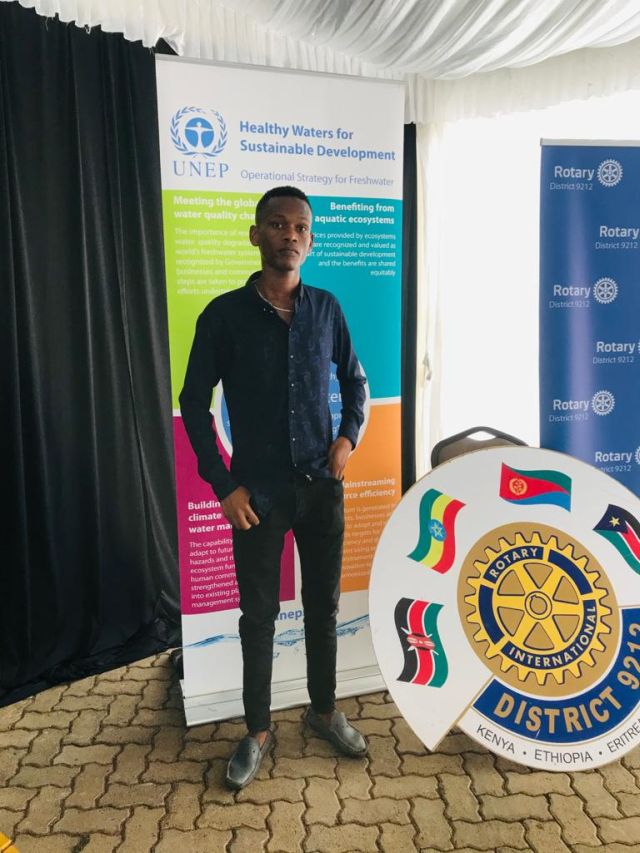
"Pure Maasai," when introducing himself, "both my parents are pure Maa people."
Since a kid, Moses grows with a local background. A cow herder, just like other boys in the community, "For Maa people, livestock is life, talk and walk, with long migrating paths, seeking water and pasture for animals. Such is a necessity caused by our climate and conditions." Explained twenty-five-year-old from Amboseli, a wildlife corridor next to Amboseli National Park, at the slopes of Mt. Kilimanjaro.
"Hampered in education and other basics, I was able to start a local primary late, at the age of 11. Thirsty for knowledge, I fell in love with the school, despite pitiful home conditions. Finished primary education with top grades and was sponsored for high school," says Moses, "excelled again and proceeded to the university, aiming at a bachelor in Hydrology and Water Resources Management."
The click moment for IWC was here.
While in high school, Moses developed a strong will "To change the situation back home by volunteering.“ „I started educating my peers on the importance of environmental conservation and management, planting trees, charity works. I emphasized the importance of campaigns for donating school stationery for kids, like writing materials and sanitary towels."
Fateful decision
„Aware of my community problems, I decided to pursue an environmental-related course to get deep insight and understanding of water and the general environment, intending to put such knowledge to active use. During the fundraising for children homes donation (my second year), I met a collègue who asked do I know about Rotary International. I admitted: NO. He explained to me about Rotary in detail. I realized that it is best to serve the community by being in the Rotary. Without hesitation, I joined The Rotaract Club of Maseno University back in 2017, happy to meet other volunteers“, remember Moses.
Start and recognition
He continues, "Working with other Rotaract Clubs I met Jackline (Rotaract Club of Eco Warriors current President). She was then a member of the Rotaract Club of Nairobi University. We worked and shared a lot. Richard Kirundi, OGW, Senior Government Administrator and Environmental Enthusiast, looked at us on social media and asked for an urgent meeting. As the Charter President of the Rotary Club of Lavington Eco-Nairobi City (The First Rotary Eco Club outside the US), he advised us to start a Rotaract Eco Club (The first Rotaract Eco Club in Africa). So, the ROTARACT CLUB OF ECO WARRIORS was born. We started working immediately and got recognition from the United Nations Environmental Program, Lavington Eco and Kenya Association Of Manufacturers. We aim to restore damaged ecosystems, creating a community where one would love to live. We are 25 Eco Warriors. We are passionate about change and service to the community."
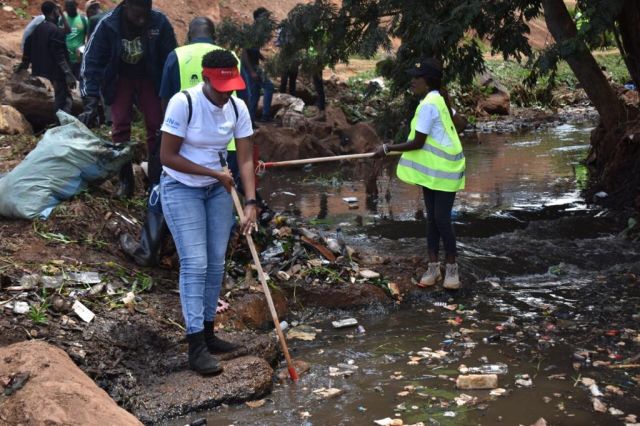
IWC: We all wish big. One of mine is to meet highly positive and productive people. That one just came true. Can you describe to us the daily Eco-Warrior work on fulfilling the wishes?
As an Eco-Warrior, I have always believed that the world we have created is a product of our thinking. The key is to bring the world closer to love and brotherhood. Be a part of nature. Eco-Warrior focus on:
- Passionate giving to the community with volunteering and charity.
- Doing without reminder or pressure.
- Connecting and networking locally and globally and using exposure to new ideas.
- Being open to coaching and correction, to learn new things daily.
- Personal development and learning are prime duties.
- Nurturing nature to deserve to live on our beautiful earth.
- Above all, I believe that no one is limited in achieving his/ hers goals/ wishes.
IWC: The very word 'warrior' may sound dangerous. Should anyone be afraid of you and your comrades?
For us, 'warrior' describes one protecting and fighting the enemy of the people against destruction and impunity. Eco-Warrior protects, safeguards and fights against the devastation of nature and the environment, our ecosystems of sustainable development while conserving and managing them. He is a good ambassador of ecosystem restoration. Therefore, the term should not sound threatening. Better, it should bring a picture of a champion of conservation and environment management for generations to come.
IWC: What is the big success you have achieved so far as a member of the Rotaract Club?
Campaigning for primary school kids in my community (Namelok Village). I started the initiative 'Somesha Mashinani' (Educating Upcountry). In 2018 we donated stationery and sanitary towels. I was a member of the Rotaract Club of Maseno University then and Secretary for the Earth Sciences of Students Organization of Maseno University. I steered two projects for the Rotaract Club of Eco Warriors in 2021 (Greening Ruiru Prisons and Adopt Kirichwa). They were successful, endorsed and funded by the Prisons Department of Kenya, UNEP and Kenya Association of Manufacturers.

IWC: Please describe projects you were involved in. Of which are you are most proud?
We work on:
- Adopt a forest - Nairobi National Arboretum: Nairobi Arboretum is approximately 30 hectares of land close to the heart of Nairobi city, bounded by the Kirichwa River. One of few remaining green spaces in Nairobi. In October 2021, Rotaract Eco-Warriors got long term care of the park from the Kenya Forest Service and Kenya Wildlife Service. Care means greening and maintaining reserves for exotic tree species and wildlife. We look for walkways, jogging trails and picnic areas.
- Adopt a River - Kirichwa River: Kirichwa River is a tributary of the Nairobi River. It emerges from the Dagoretti area outskirts of Nairobi and is one of the most polluted tributaries. This project is in collaboration with Lavington Eco. United Nations Environmental Program for river restoration funds six months, which will end in March. We hope after for renewal of support. We have done monthly cleanup, monitoring, waste assessment and water quality analysis, all with community engagement. The last action was on 28th January 2022.
- Greening Ruiru Prison Training College - Ruiru Prison: Ruiru prison is one of the largest prisons in Kenya, with Kenya largest tree nursery (over 12 million seedlings). On 18th December 2021, we planted 4000 tree seedlings. It is a long-term project to green and maintain while engaging prisoners who will be beneficiaries. The action of Rotaract Eco Warriors offers recognition and benefits is funded by UNEP, Kenya Prisons and the Kenya Association of Manufacturers.
I am proud of the Prisons and Kirichwa projects. I championed them. They were accepted and finished successfully.
IWC: Let us imagine. If you had money, a lot of money, like those global funds, where will it go?
We live on different sides of the world, in unlike climate conditions, enjoy divergent standards of living and confront incompatible obstacles. For my community, the world level of funds will pay for the projects solving everyday difficulties, e.g. water shortage and resulting food shortages, poor and inadequate health services, acutely limited education, sanitation and shelter. All mentioned is caused by the arid and semi-arid climate and scarce or nonexistent government support to the community. With ample money, I would choose a water project. The water is a remedy to almost all other problems here. Access to clean and sufficient water will breed many economic activities like farming (irrigation) and livestock (much-needed water and pasture). That will open new job opportunities and new money sources in the community. People will be able to finance more basic and even some secondary needs, the economy will open up, the living standard will rise. In Kenya, homelessness is a result of difficult conditions. The number of homeless families will decrease if we bring them above the poverty threshold.

IWC: Why do you think cooperation with the likes of IWC (International Water Conference) is essential?
Regardless of different lifestyles and conditions, collaboration and joint effort are necessary. We need to support each other and make the world a livable and fair place for everyone. Humans need to meet their needs to live happily. Sinergy of global and local efforts will be an immensely positive impact.
IWC: I am always happy to meet people with so much enthusiasm. It tells me that the world has a good chance for the future. I hope that our next endeavours will be in that direction. Do you think it is possible for ordinary folk like us?
It is possible. If we are focused, enthusiastic people of goodwill and stamina, there is no limit.
©IWC
We strive to define essential questions and propose scientifically sound solutions. We look at temporary closures as an opportunity to gain a new level of human unity. The professionalism and expertise of SC members are our trump card and exclusive approach to problem-solving.
IWC Scientific Committee (SC), at the moment, is DI Veljko Suzić (chair, RC Sombor, RS), dr sci Ivan Miškulin (RC Osijek, CRO), m sci Laszlo Mrekva (RC Baja, HU), dr sci Mlađen Jovanović (RC Zemun, RS), h.p. spec. Natalia Meylunas (Italy) and dr sci Radmilo Pešić (RS), with supporting members mag sci Vladimir Prodanović (The Netherlands), mag sci Rudolf Tomić (CRO), Matea Tomić (CRO), dr sci Aleksandar Gajić (RS), DI Milan Novković (UK) and MSc Đorđe Marinković (HU). IWC looks with high focus at the documents of DG EC Joint Research Centre in Brussels.
Introduction
New times need new solutions. The most important question of our present and future is how to deal with the water. The Water problem is global. There is no part of our planet not subject to it.
The International Water Conference (IWC), with the innovative approach to solving water problems, arose precisely to address the crucial issues, not been adequately resolved so far. Past gave us valuable positive experiences and good practice examples. Alas, our times cry for faster and longer-term solutions.
The IWC base is stable on scientists and experts in diverse fields, interests and disciplines, striving to point out a wide range of global water-related problems and to offer, hopefully, implement, lucid and comprehensive solutions.
The IWC IDEA is a Rotarian initiative. Rotary Water and Sanitation committees and workgroups animated and brought together the scientific and professional community. Those fundaments, and the active involvement of members of four Rotary Districts, are the core of our focus on continued and sustainable development, as seen and described by Rotary International, European Union and the United Nations. Besides those, we look with great attention at the documents and advice of the DG EC Joint Research Center in Brussels.
IWC adopted, as one of its goals, Number 6 of the 17 United Nations sustainable goals: Ensuring access to clean water and sanitation for all. Billions of people, mostly from rural areas, still lack these essential services, regardless of the substantial progress in increasing access to clean drinking water and sanitation.
Worldwide:
- One in three people does not have access to safe drinking water.
- Two out of five people do not have an elementary handwashing facility with soap and water.
- More than 673 million people still have no alternative to open outdoor defecation.
Pandemic has demonstrated the critical importance of sanitation, hygiene and adequate access to clean water for preventing and containing diseases. Hygiene saves lives. According to the World Health Organization, handwashing is one of the most effective actions you can take to reduce the spread of pathogens and prevent infections, including COVID-19. Yet billions of people still lack safe water sanitation, and funding is inadequate.
We support the UN “International Decade (2018–2028) for Action – Water for Sustainable Development”. Water is a critical sustainable development element and essential for poverty and hunger elimination.
The UN Member States expressed deep concern over the global lack of safe drinking water, sanitation and hygiene. The same problem is related to water scarcity and pollution, desertification, drought and climate change.
The Decade focuses on:
- the sustainable development and integrated management of water resources for the achievement of social, economic and environmental objectives,
- the implementation and promotion of related programmes and projects,
- the furtherance of cooperation and partnership at all levels to help achieve internationally agreed water-related goals and targets, including those contained in the 2030 Agenda for Sustainable Development.
The IWC GOAL is a practical and usable summary of available science, technology and engineering to create tools that may indicate sustainable solutions to existential water-related problems. Global catastrophic events, the current pandemic and likes, are proof of the ubiquitous importance of water.

